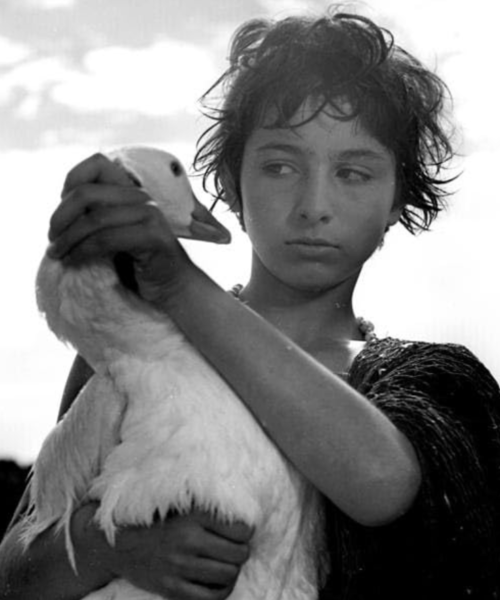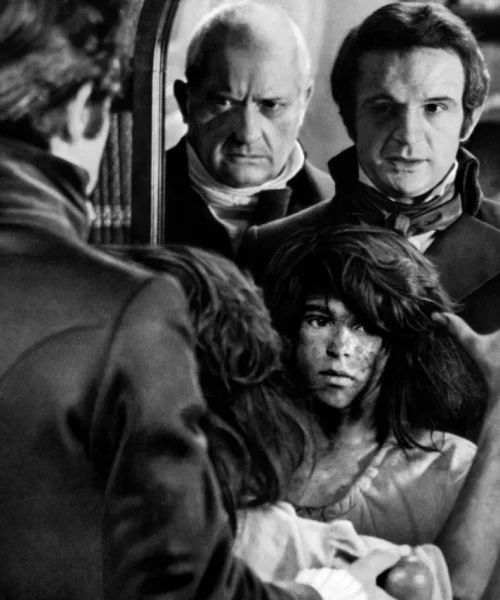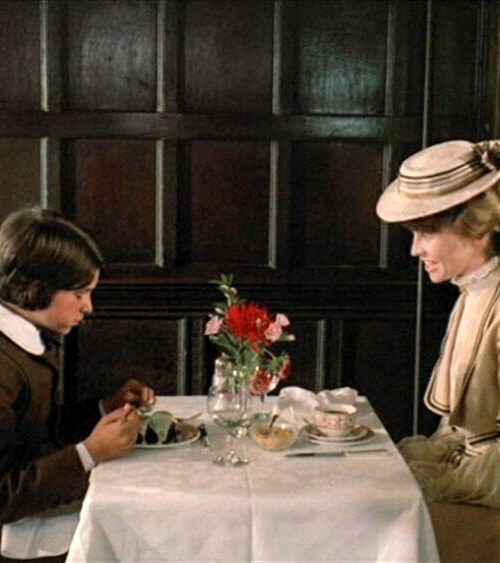Among the many facets of cinema, few films manage to capture the elusive essence of childhood with the same grace and sensitivity as “Moonrise Kingdom.” Wes Anderson doesn’t just present a story: he gifts us a memory, a fleeting reminiscence of that time in life when every emotion is amplified and every adventure seems endless.
Watching “Moonrise Kingdom,” one is enveloped in a sense of sweet melancholy. It’s as if Anderson distilled the very essence of childhood – with its joys, fears, uncertainties, and discoveries – and gently poured it onto the big screen. There’s not a moment when we don’t feel catapulted back in time, reliving those authentic and often overwhelming feelings of adolescence.

What profoundly strikes is the way the film addresses deep and complex themes of emotional growth. The challenges of abandonment, acceptance, and self-discovery are not presented as moral lessons or moments of deep drama. Instead, they are masterfully woven into the plot with a sense of humor that makes them accessible and tangible. It’s this touch of lightness and effervescence that ensures the film doesn’t get lost in a sea of introspection but remains pleasantly anchored in reality.
The magic of “Moonrise Kingdom” lies in its evocative power. It’s not just a cinematic vision; it’s a journey through the turbulent waters of adolescence. And as one dives into this sea of emotions, one can’t help but smile, because Anderson, with his inimitable style, has the gift of reminding us that, despite the emotional storms of childhood, there’s always a glimmer of humor and hope guiding us towards the horizon.
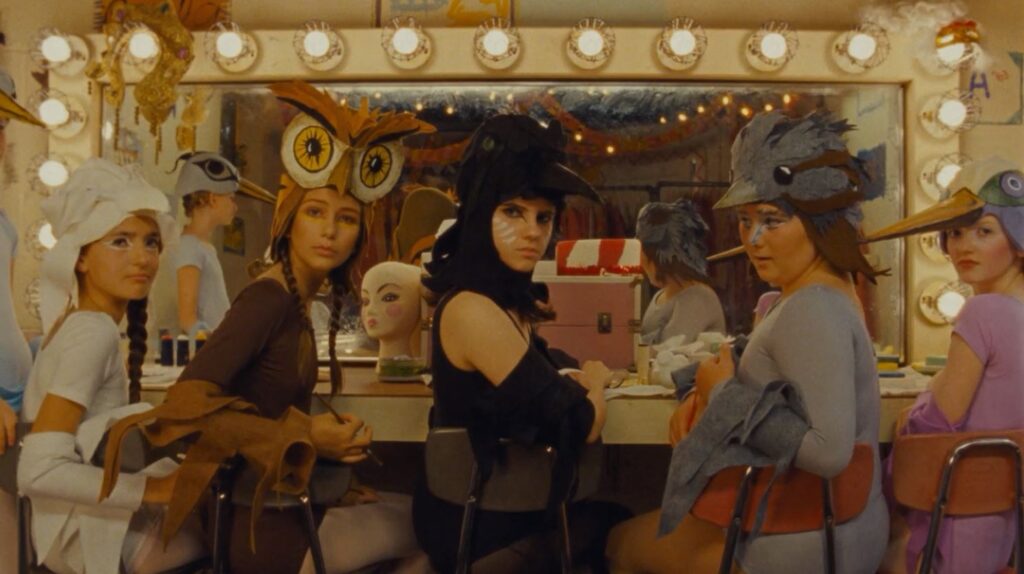
"Moonrise Kingdom": A Harmony of Images and Sounds in a Delicate Balance Between Nostalgia and Adventure
The introspective and adventurous journey of the young lovers in “Moonrise Kingdom,” Wes Anderson’s 2012 masterpiece, leads us into a universe where every frame and every musical note resonates with deep and authentic emotion. This film is much more than a simple narrative; it’s a hymn to innocence, adventure, and discovery.
- The Andersonian Touch: Anderson has never been one to step back when it comes to cinematic style. His obsession with details, symmetry, and pastel colors is predominant in “Moonrise Kingdom.” Each scene, like a page torn from a vintage photo album, wraps us in a hug of nostalgia. It feels like witnessing a moment suspended in time, trapped in the perfection of a memory.
- A Symphonic Accompaniment: The musical touch of the film is another tool that Anderson uses masterfully. The presence of Britten, and particularly “Noye’s Fludde,” is not just an artistic whim. It’s a thematic call, an echo of innocence, adventure, and transcendence. The soundtrack is not just background music but intertwines with the plot, becoming a character in its own right.
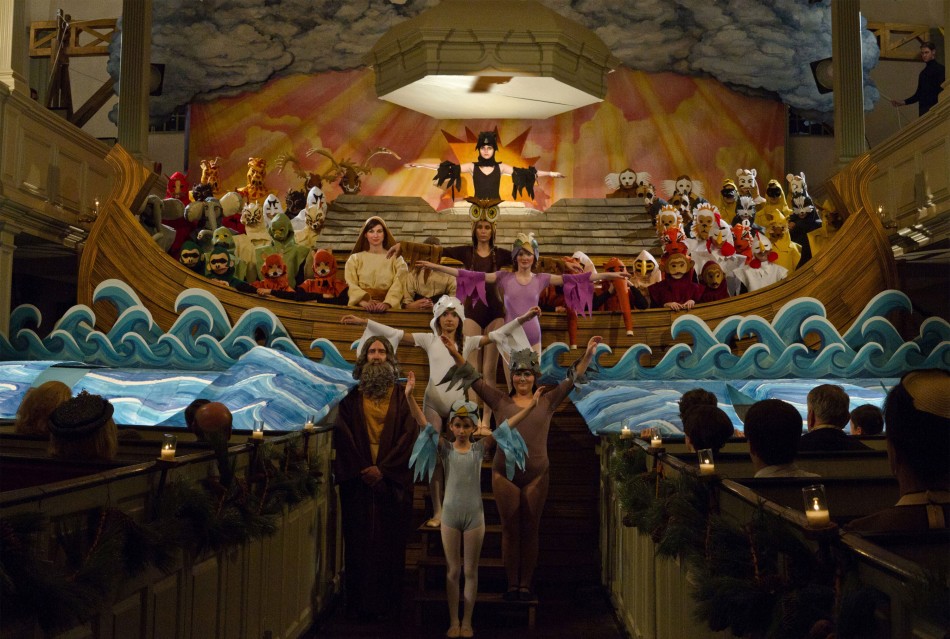
- Photographic Aesthetics: Visually, the film is a true delight. The collaboration between Anderson and Yeoman offers us a color palette that seems to capture the very essence of summer. The nuances of the landscapes, contrasted with the enveloping tones of the interiors, are a metaphor for the conflicting emotions experienced by the protagonists: the immensity and uncertainty of the outside versus the warm familiarity of the inside.
- Final Reflections: “Moonrise Kingdom” is a shining example of how cinema, music, and photography can merge together in a symphony of emotions. Anderson offers us a simple but layered story, a lens through which to observe the meanders of first love, adventure, and self-discovery. And like with every masterpiece, there’s always something new to discover with each viewing. It’s an invitation to remember, dream, and above all, to feel young again.

The Plot:
Sam Shakusky is a twelve-year-old orphan and a boy scout. During a performance of Benjamin Britten’s “Noye’s Fludde” the previous year, he met Suzy Bishop, a girl of the same age with whom he began exchanging secret letters. Becoming friends and then lovers, the two decide to run away together in the summer of 1965.
When their disappearances are noticed, a real manhunt ensues on the island. Searching for Sam are his boy scout peers, led by their leader, Scout Master Ward, and the island’s sheriff, Captain Sharp. Meanwhile, Suzy is sought by her parents, Walt and Laura Bishop, who are also lawyers.
As the community is in turmoil over their disappearance, a storm also approaches, making the search even more urgent. Throughout the film, various themes such as young love, understanding, family, and the need for belonging are explored.

As the story unfolds, details emerge about the characters’ lives and the reasons why Sam and Suzy might want to escape from their respective environments. The plot culminates with an epic storm that serves as a metaphor for the emotional storms the characters themselves are going through.
“Moonrise Kingdom” is a story of growth, adventure, and young love, all presented through the stylistic and whimsical lens of Wes Anderson. The film ends with a sense of hope, suggesting that even through storms and challenges, love and understanding can triumph.
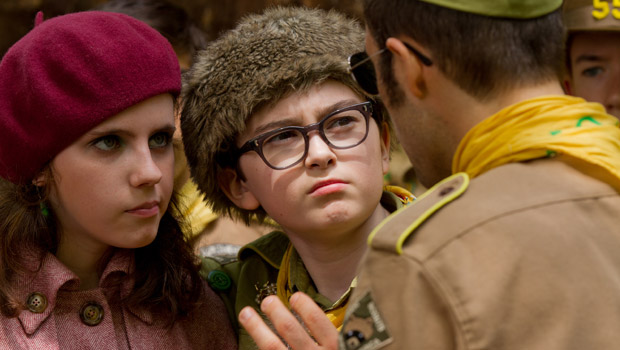
The Map: A Compass of the Soul
A particularly evocative detail in “Moonrise Kingdom” is the frequent appearance of an island map, carefully consulted by Sam and Suzy during their adventure. More than a mere orientation tool, this map becomes a poignant metaphor for their existential journey.
- Search for a Place in the World: The map is not just a geographical tool, but a symbol of their ongoing search for a role, an identity, a place in the vast universe of adolescence. In a world where both often feel out of place, the map represents that inner compass guiding their self-exploration.
- Navigating Through Adolescence: Adolescence is a period of turbulence, unanswered questions, and diverging paths. The map, in this context, is their attempt to find a way through the labyrinth of emotions and youthful experiences.

- Planning and Self-Determination: Sam and Suzy are not passive characters. They have a plan, a vision, a destination. The map, with its drawn lines and outlined paths, represents their burning desire to take control of their own destiny.
- Bond and Complicity: Every time the two protagonists lean over the map, their deep connection emerges. It’s a ritual that seals their alliance, their joint commitment to finding that inner “Moonrise Kingdom,” that place of pure acceptance and happiness.
With this map, Wes Anderson offers us further proof of his genius: the ability to transform an everyday object into a powerful symbol, loaded with meanings and emotional resonances.
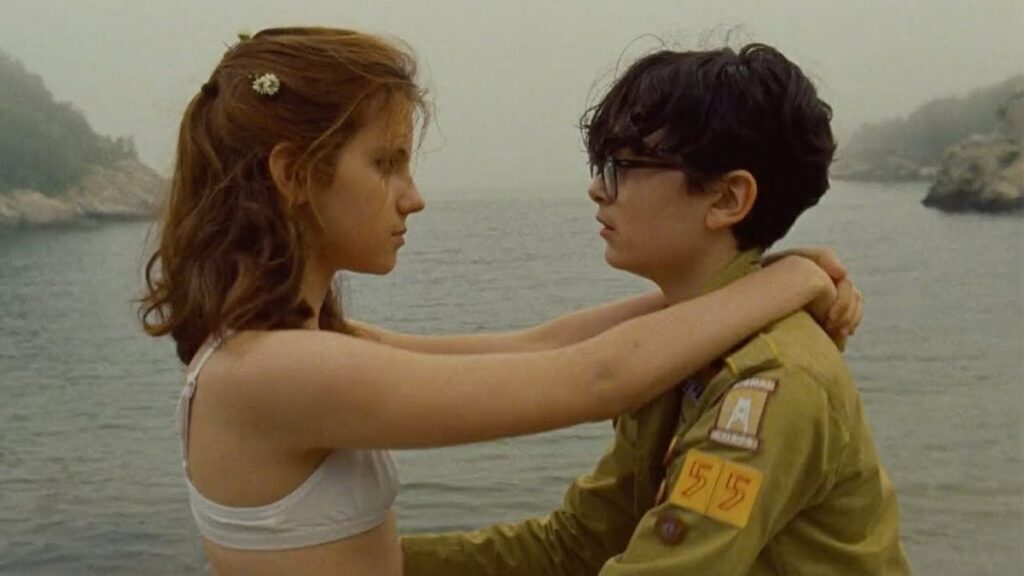
Memorable Scenes
Wes Anderson’s “Moonrise Kingdom” is permeated with a unique sensitivity, where even the most delicate scenes are rich in meaning and emotion. Here are some of the film’s strongest and most memorable scenes:
- The Escape: The scene where Sam and Suzy plan and execute their escape is touching. It shows two young lovers, determined to create a small paradise away from life’s complications.
- The Camp: Once they escape their daily routines, the two youngsters camp in a bay they call “Moonrise Kingdom.” Here, they dance intimately on a beach to the rhythm of a French song, “Le Temps de l’Amour” by Françoise Hardy. It’s a moment of innocence and deep affinity between the two protagonists.
- Intervention of the Boy Scouts: Sam’s fellow scouts, initially on a mission to bring him back, decide to support him in his romantic adventure, offering solidarity and complicity.

The Church Tower during the Storm: Towards the end of the film, Sam and Suzy are chased to the top of a tower in a church while a storm rages around them. The scene is filled with tension and symbolism, with the storm representing both the external forces trying to separate them and the emotional turbulences they are experiencing.
The Rescue: The intervention of Captain Sharp and Scout Master Ward to save Sam and Suzy from the tower during the storm is a climax. This scene not only offers suspense but also revelations about the integrity and intentions of the adult characters regarding Sam’s future.
- The Adoption: One of the final scenes, where Captain Sharp decides to become Sam’s legal guardian, is moving. After all the dangers and adventures, there’s a sense of resolution and optimism for the young boy’s future.
These scenes, along with many others in the film, are enhanced by the combination of direction, screenplay, cinematography, and music, making “Moonrise Kingdom” a truly unforgettable cinematic experience.








